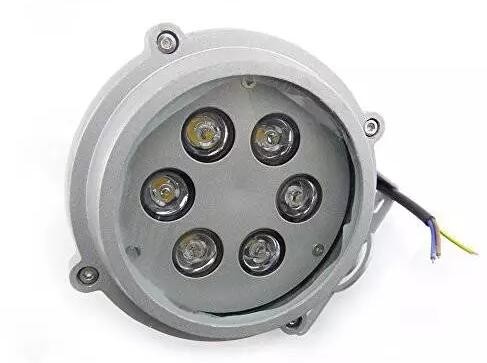Many people might wonder why buried IP67-rated lamps sometimes leak water, even though they have passed relevant tests and are branded products. For instance, you might have seen these lamps used in various projects, and some even come with official IP67 certification. Despite this, there are instances where water ingress occurs.
Take a look at the image below, which shows how a seemingly well-sealed lamp can end up with water inside.

So, does this mean that an IP67-rated buried lamp will always leak? To answer this question, we need to first understand what the IP67 rating actually signifies. If you're unsure, you can refer to resources like "Landscape Lighting: Types of Underwater Lights and Their Applications" or "iPhone 7 is IP67, What Does IPXX Mean?" These articles will help you grasp the concept of the fixture's waterproof rating.
Now, let’s break down the potential causes of water leakage in buried lamps:
1. **Unreasonable Design**:
One common issue is poor design. For example, some lamps are filled with adhesive to achieve a waterproof seal. Initially, these lamps may pass all tests and appear to function perfectly. However, in an outdoor setting, the adhesive can degrade over time, turning yellow and losing its effectiveness. This aging process can lead to water seeping into the lamp.

As the adhesive ages, the lamp becomes vulnerable to water ingress. In fact, relying solely on adhesive for waterproofing is unreliable. A proper waterproof structure is essential.
Mr. Xu commented, “If the design of a product is flawed, it shouldn’t be considered a qualified product.â€
2. **Material Defects**:
Another issue arises from the materials used. Some manufacturers cut corners by using substandard materials. For example, the lens cap might not be secured properly due to insufficient pressure. Buried lights are frequently exposed to moisture and water, so improper sealing can easily result in leaks.
3. **Process Defects**:
Manufacturing flaws can also contribute to water leakage. For instance, a large luminaire might have only three screws holding the lens cap in place, with significant spacing between them. This lack of adequate fastening means the lens cap won't be securely sealed, leading to potential tilting and eventual water ingress.

With such inadequate fastening, the risk of water leakage increases significantly. A properly designed luminaire should have sufficient screws placed close enough to ensure a tight seal.
4. **Installation Issues**:
Even if the lamp itself is well-designed and manufactured, improper installation can still lead to water leakage. Factors such as incorrect positioning, failure to use appropriate sealing materials, or improper tightening of components can compromise the lamp's waterproof integrity.
In conclusion, while an IP67 rating suggests a high level of protection against water, several factors can compromise this protection in real-world conditions. From poor design choices to substandard materials and improper manufacturing processes, there are multiple areas where things can go wrong. Ensuring that lamps are both well-designed and correctly installed is crucial to preventing water leakage in outdoor environments.
Before we dive deeper into the nuances and similarities of popular mSATA SSD storage, DDR4 memory, and regular hard disk drives, it's essential to understand the various benefits and drawbacks associated with each component.
One component in particular, DDR4 memory, stands out from its predecessor, DDR3, due to its higher clock speeds, larger data transfer capacity, and overall performance boost.
When it comes to memory capacity, DDR4 is able to handle substantially larger amounts of data, making it an ideal choice for high-performance computing setups.
Furthermore, DDR4 consumes less power than its predecessor, which is increasingly important when it comes to maintaining efficiency and sustainability in the computing industry.
In contrast, mSATA SSD storage offers a range of benefits that make it a preferred choice for many users. Compared to traditional hard disk drives, mSATA SSD storage offers faster read and write speeds, making it ideal for applications that require high-speed data transfer.
Additionally, mSATA SSD storage is more durable and less prone to mechanical failure, making it a reliable choice for users who require long-term data storage.
Finally, mSATA SSD storage consumes less power than traditional hard disk drives, making it an eco-friendly choice for users who prioritize sustainability.
Pc Components,DDR3 DDR4 Memory,MSATA SSD Storage,Hard Disk
Shenzhen Innovative Cloud Computer Co., Ltd. , https://www.xcypc.com